In the rich tapestry of American fashion, few stories are as compelling as that of GANT, a brand that weaves together the threads of immigrant ambition, sartorial innovation, and the quintessential Ivy League aesthetic. The saga of GANT begins not on the fashion runways or in lavish design studios, but with a young Ukrainian immigrant, Bernard Gantmacher, whose journey to America in 1907 marked the humble beginnings of what would become a defining name in American sportswear. Landing in New York City with dreams and determination, Gantmacher’s entry into the Garment District set the stage for a new chapter in American style, driven by a blend of craftsmanship and entrepreneurial spirit.
Bernard’s initial years in the bustling heart of New York’s fashion hub, under the newly Americanized name ‘Bernard’, were characterized by his work as a ‘closer’—a pivotal role in garment assembly. His days were shaped by the rigorous demands of tailoring, a skill that would later define GANT’s commitment to quality. It was also in this period of hard labor and learning that Bernard met his future wife, Rebecca Rose, a fellow garment worker specializing in buttonholes. This partnership was not just romantic but was also a professional alliance that would propel them into the world of business. After serving in World War I, Bernard returned with enhanced ambitions and, alongside Rebecca and business partner Morris Shapiro, founded the Par-Ex Shirt Company in Brooklyn, which excelled in making shirts for other revered brands.
The real pivot came in 1949, under the influence of Bernard’s sons, Marty and Elliot, who transformed the family business into a standalone brand—GANT. This shift coincided with a cultural revolution in America; the post-war era saw a burgeoning middle class with an appetite for new, more relaxed styles of dressing that moved away from the stiff formality of previous decades. GANT seized this moment, channeling the casual sophistication of the Ivy League style that was emerging from the campuses like nearby Yale University. This style wasn’t just a fashion statement but a cultural shift towards effortless elegance that resonated deeply with American men.
The GANT brand, thus, became synonymous with high-quality shirts that featured unique details like the locker loop, box pleat, and the back collar button—elements that were not only functional but became hallmarks of Ivy League fashion. GANT’s influence spread beyond Yale, setting trends that defined a generation’s approach to style. As we explore how to discern the vintage quality of GANT pieces through changes in their logos and tags over the decades, it’s crucial to appreciate this storied backdrop, which highlights how deeply GANT is woven into the fabric of American fashion history.
GANT ‘Shirtmakers’ Campaign
How to tell if GANT is vintage from the logo
GANT, renowned for its classic American sportswear, has periodically updated its logo to reflect changing fashion trends and brand identity. These changes are crucial for collectors and fashion enthusiasts trying to date their GANT items. The progression of the GANT logo over the years can help identify the era of production, especially useful in the vibrant market for vintage clothing.
1980s to 2000s GANT logo
- The logo from this era features a detailed shield emblem, incorporating three stars at the top and vertical stripes below.
- The typeface used in ‘GANT’ is bold and straightforward, aimed at highlighting the brand’s impact in a booming casual wear market.
- This logo often appears on tags inside the garments and is emblematic of the brand’s expansion into global markets during these years.
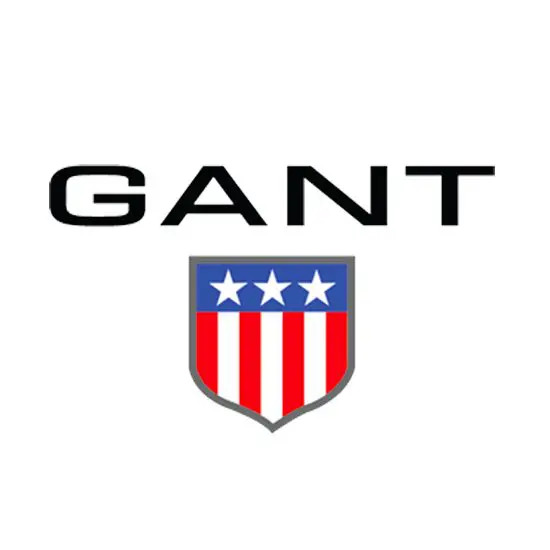
1980s to 2000s GANT logo
2000s GANT logo
- In the 2000s, GANT simplified its logo to a cleaner, more modern aesthetic.
- The shield became less ornate, focusing on a plain design with only the three stars remaining at the top.
- This design phase aligns with GANT’s strategy to appeal to a younger, fashion-forward audience, reflecting a minimalistic trend in fashion branding.
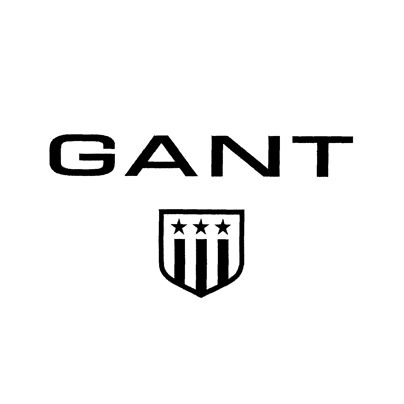
2000s GANT logo
2010s to now GANT logo
- The most recent iteration of the GANT logo maintains the minimalist approach with a sleek and modern typeface.
- The shield is further simplified, with even the stars being removed to prioritize the brand name in a very clean sans-serif font.
- This logo signifies GANT’s focus on contemporary styling while still honoring its heritage in classic American sportswear.

2010s to now GANT logo
How to tell if GANT is vintage from the tags
The tags on GANT clothing serve as a timeline of the brand’s evolution, showcasing shifts in design, logo, and manufacturing details that reflect its storied history and global expansion. From subtle changes in logo styles to shifts in production locations, each era’s tags offer unique insights into the periods they represent.
Having difficulty with your vintage tags or labels? Submit a picture on our vintage tag identification page, and we’ll take care of it!
1980s vintage GANT tags
- Features bold, clean serif lettering predominantly in uppercase.
- Includes the distinctive GANT shield logo, which became synonymous with the brand’s identity.
- Mostly manufactured in the USA, as indicated on the tags.
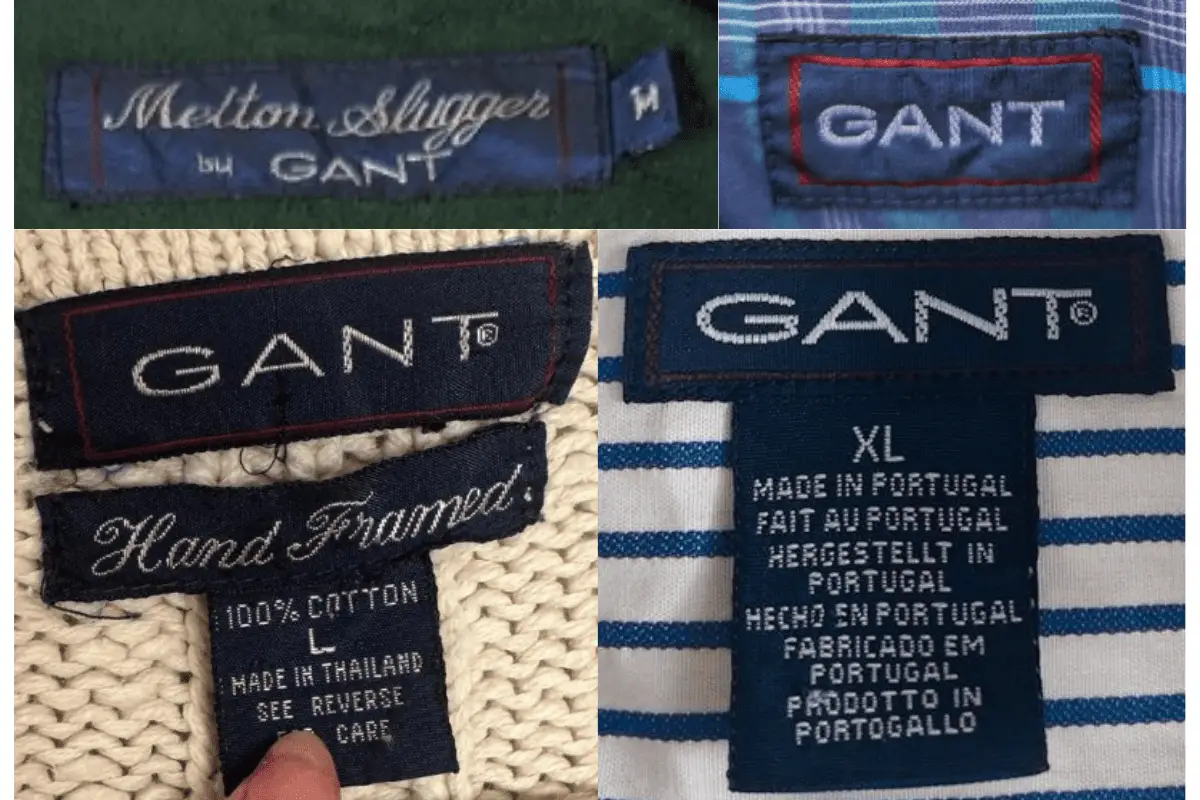
1980s GANT tags
1990s vintage GANT tags
- Continuation of the GANT shield logo but with more varied tag colors.
- Introduction of additional text details like size and country of manufacture below the logo.
- Tags commonly indicate manufacturing in more diverse locations, reflecting GANT’s global reach.
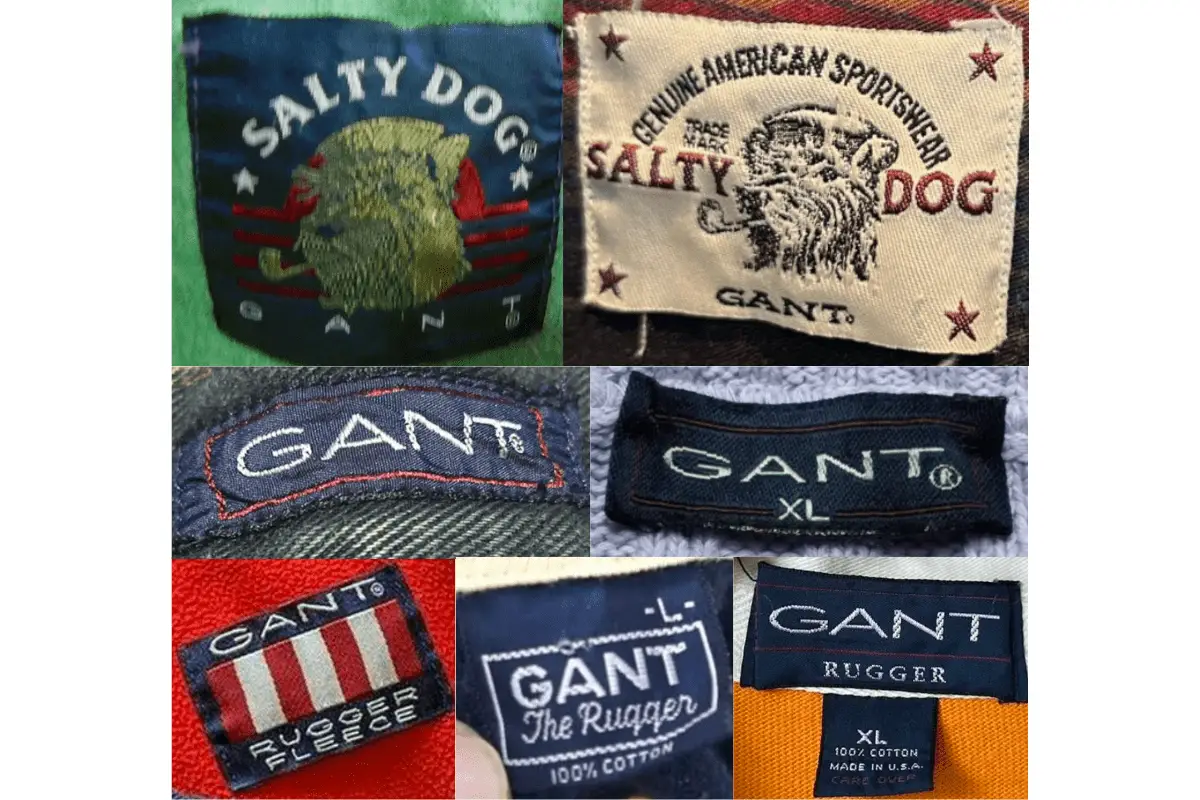
1990s GANT tags
2000s vintage GANT tags
- Introduction of modern, simplified designs with smaller logos.
- Use of both stitched and printed tag types, depending on the garment type.
- Inclusion of multi-language care instructions, emphasizing the brand’s expanded international market.
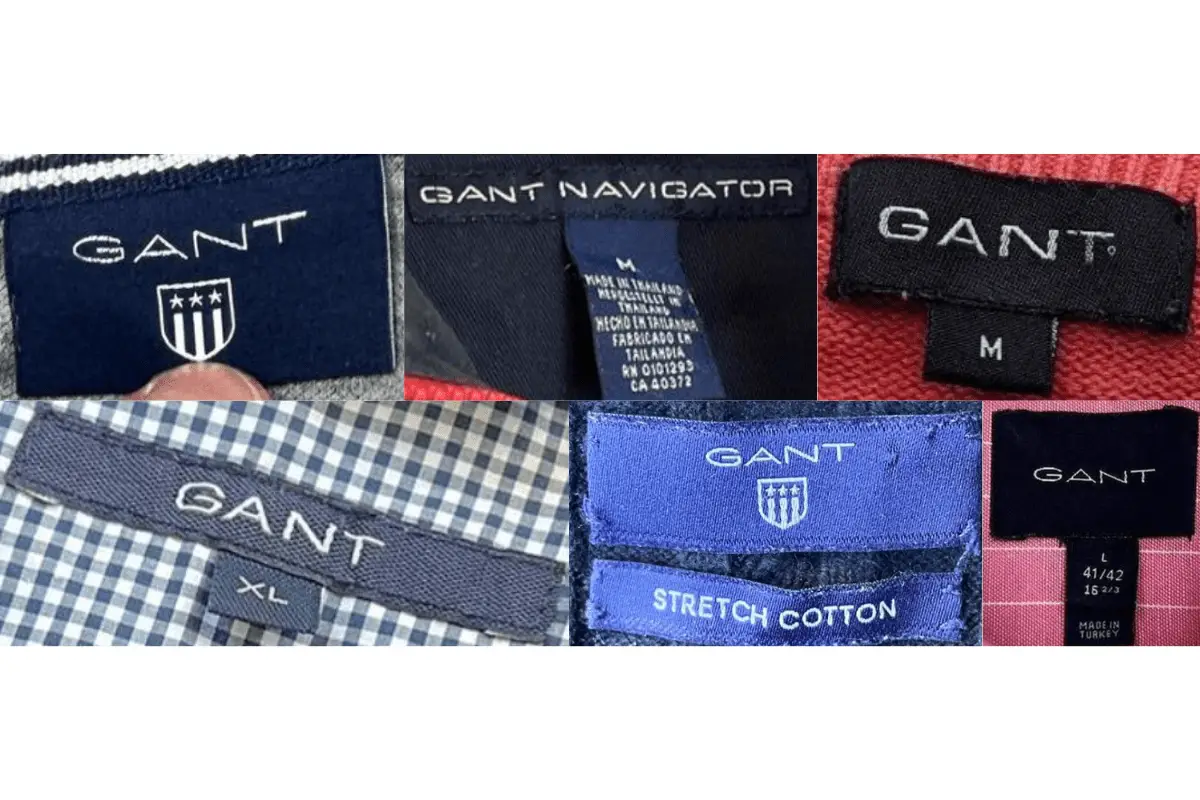
2000s GANT tags
2010s vintage GANT tags
- Modern and minimalistic tag designs featuring streamlined text and logos.
- Widespread use of non-USA manufacturing locations, such as India and Portugal.
- Tags often include fabric compositions and detailed care instructions in multiple languages.
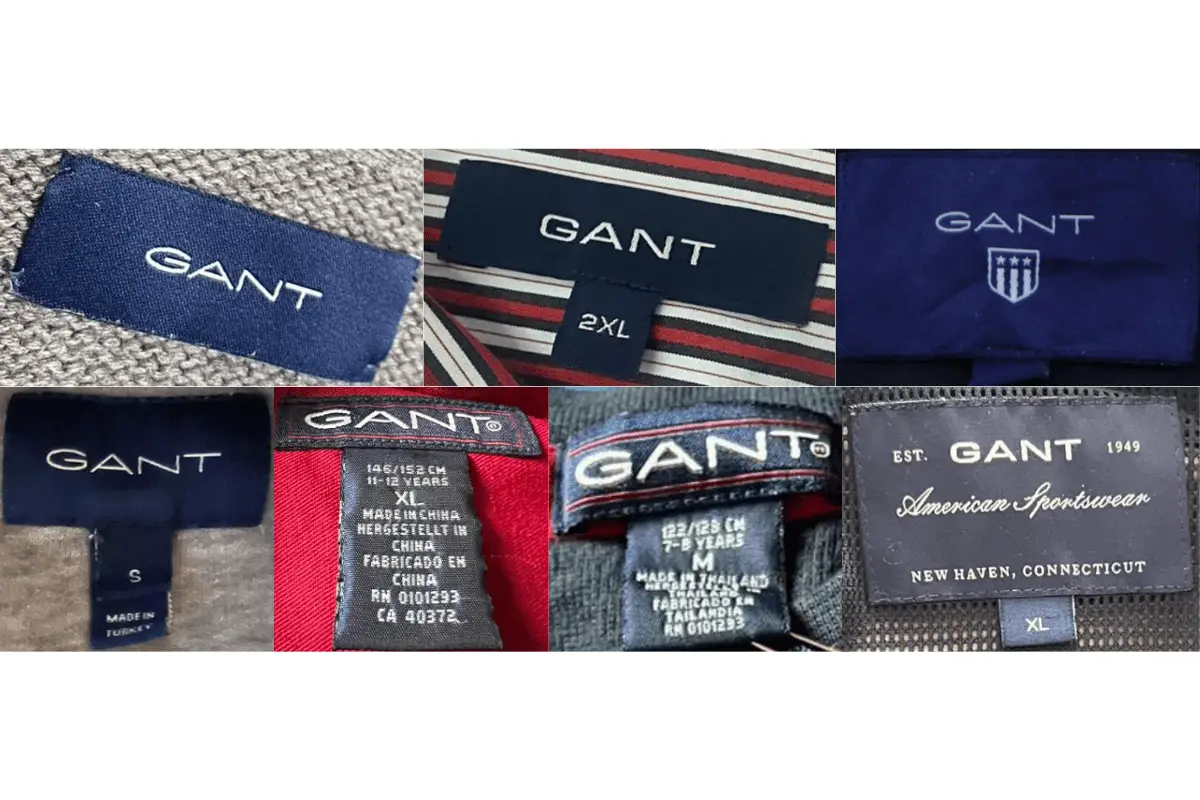
2010s GANT tags
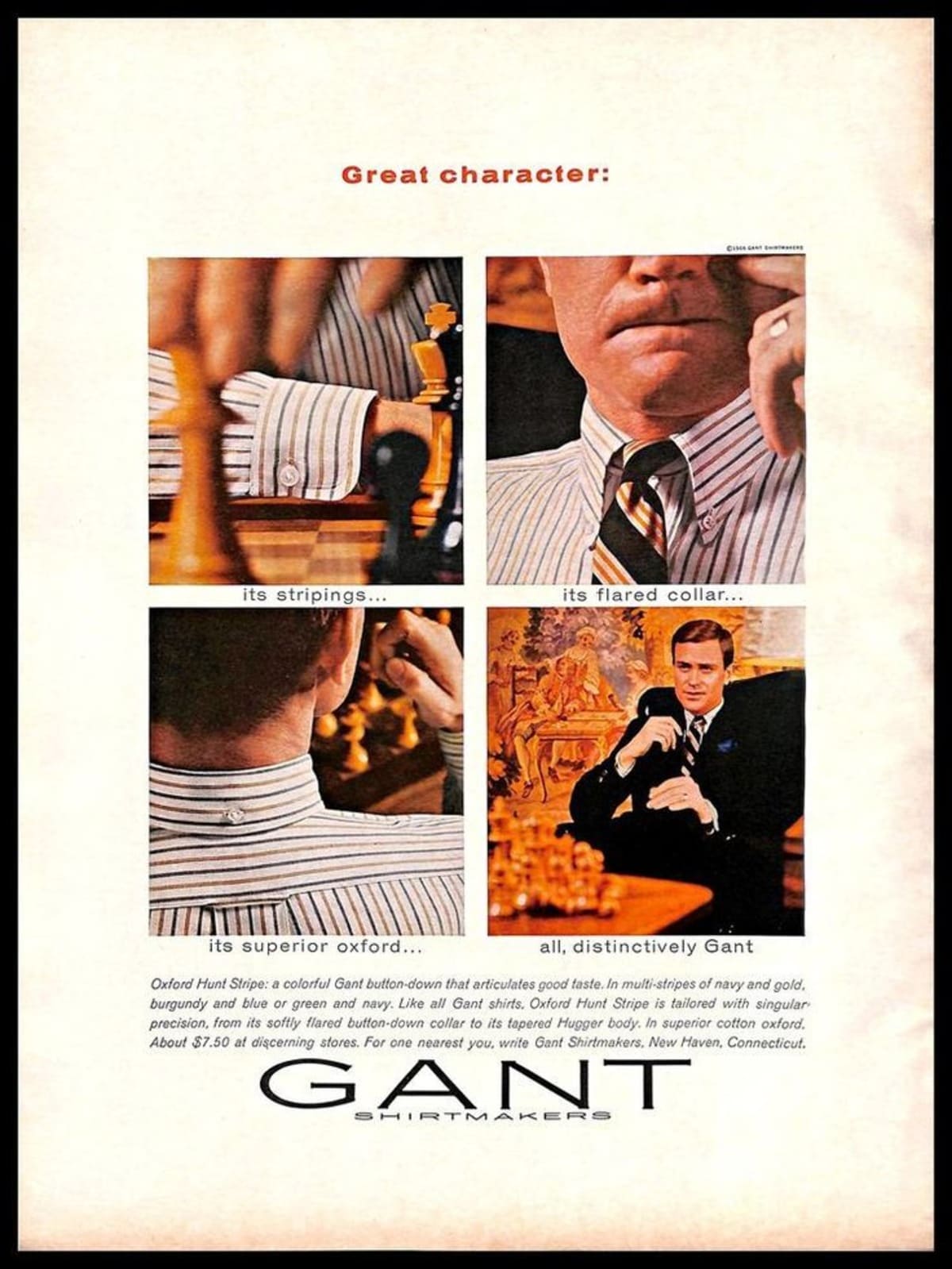

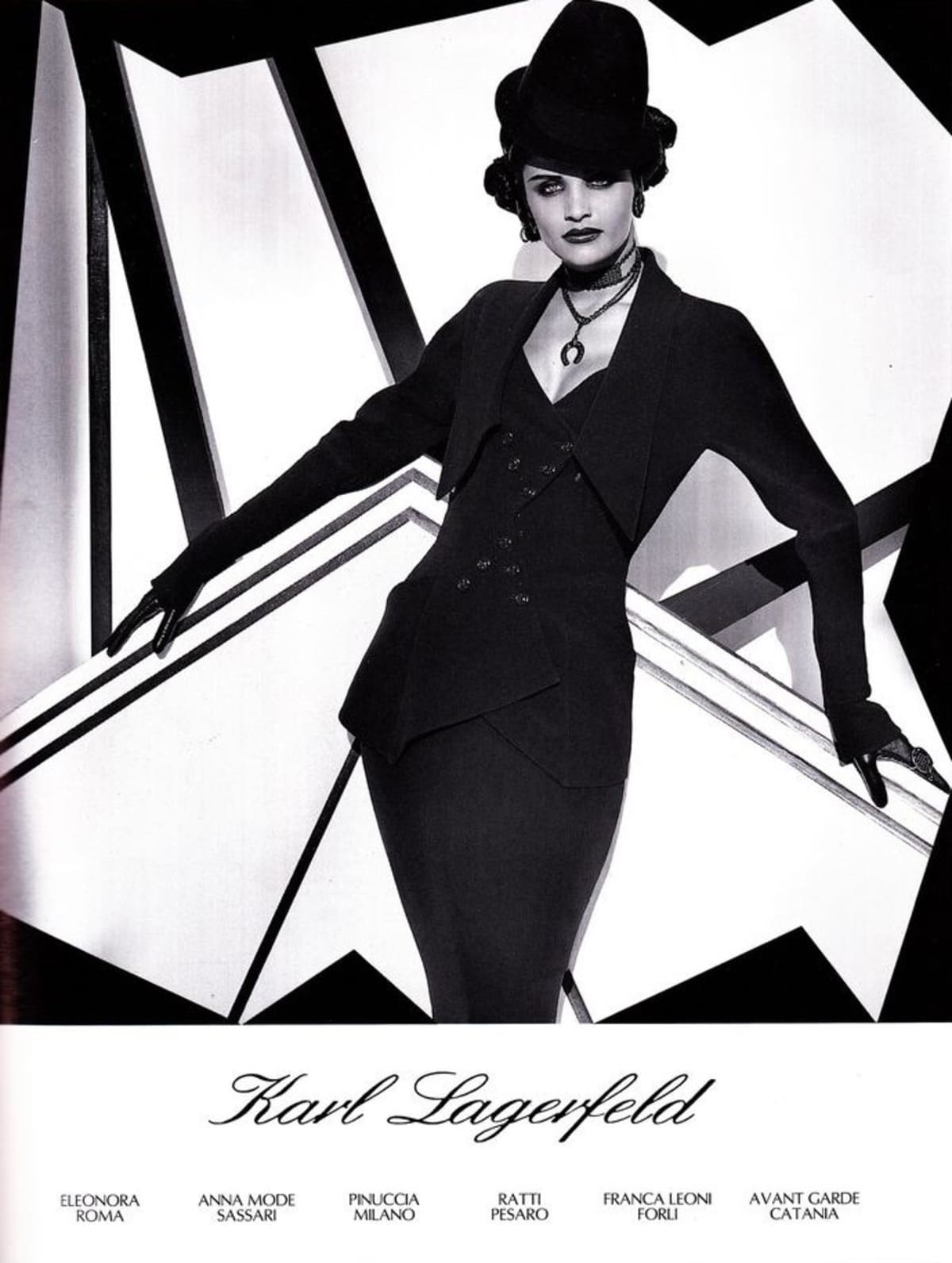


Whoa lots of beneficial information!
casino en ligne
Thanks, A lot of data.
casino en ligne
This is nicely put. !
casino en ligne
Really quite a lot of superb advice.
casino en ligne
You reported this effectively.
casino en ligne
Thanks! Excellent stuff!
casino en ligne
Position very well used.!
casino en ligne
You actually reported this wonderfully!
casino en ligne
You made your position quite clearly!!
casino en ligne
This is nicely expressed! .
casino en ligne